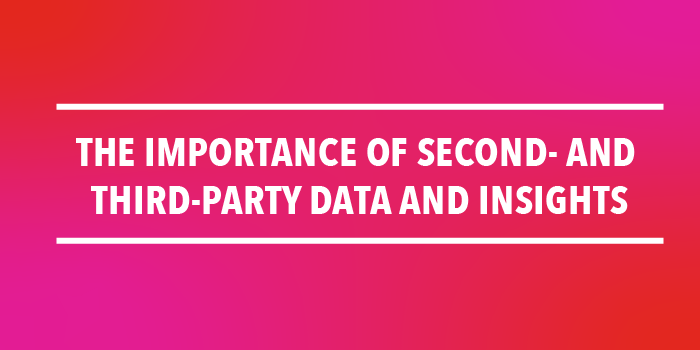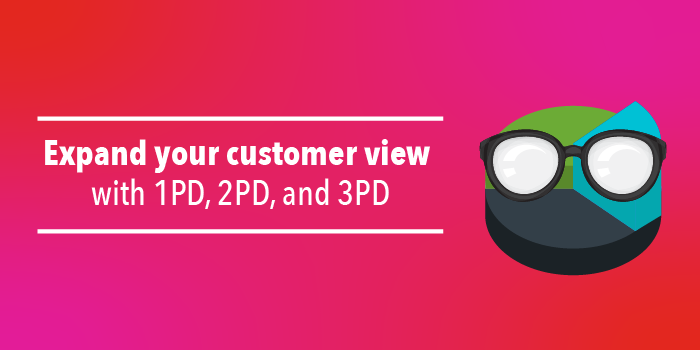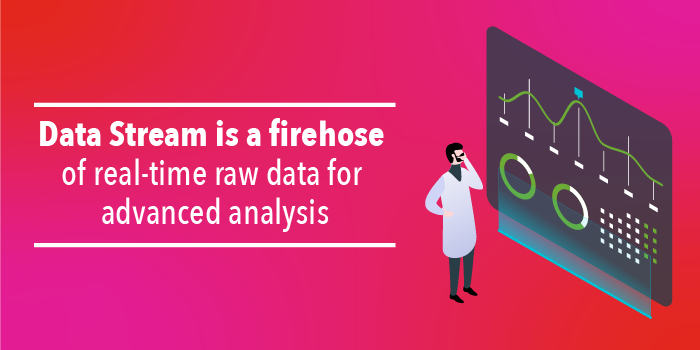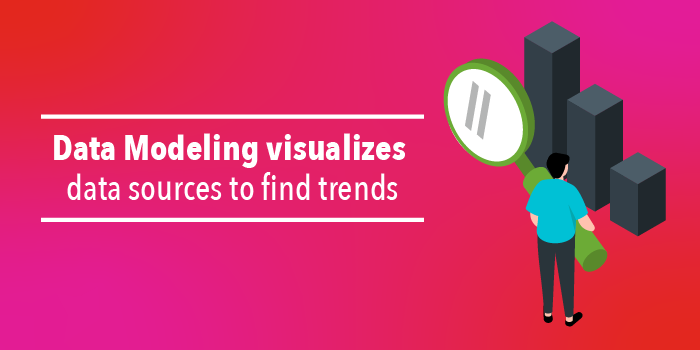
You’ve probably heard that first-party data is the most valuable to marketers. There are indeed a whole host of benefits to first-party data. It’s reliable, and, most of the time, it connects directly back to your particular audience. Still, first-party data has some downsides. Not every marketer can collect it easily, and even if you have plenty of it, it lacks scale and depth. Second- and third-party data, as well as tools to generate analytics, are essential to help you enrich and power up your first-party data.
Why Your First-Party Data Isn’t Enough
Companies prize first-party data because consumers gave it to them directly. The information you collect yourself can be vast or limited, depending on your industry and the methods you use to gather it. The data you amass needs to translate directly into revenue. You need to understand it to inform your strategic decisions or marketing campaigns. Your first-party data needs a powerful analytics tool to identify trends and develop models you can use to your advantage.
Publishers need fresh insights and analytics tools to get a firm grasp of their audiences. They need to know exactly who their audience is and what content they read. The first-party data they’ve collected tells them about visitors’ behaviors within the publisher’s site or app. However, it cannot tell them what they do outside their websites, what other sites they visit, what they watch, what they purchase or what content they consume.
To package their readers’ data and allow their advertisers to target them individually, publishers need to see a complete picture of their audience across their connected digital lives. Since first-party data can only show a sliver of who a reader is, they need to supplement their information with second- and third-party data to get a panoramic picture of their customers and readers to grow inventory opportunities.
Marketers, on the other hand, can have different amounts of data. An e-commerce company usually has vast amounts of first-party data at their disposal. They have data on all the site visitors who engage with their content and browse their site. They know their customers’ names, shipping addresses, emails and sometimes even phone numbers. Consumer packaged goods marketers, however, work with customers who rarely interact with their brands online. Still, no matter how much data marketers collect, it cannot show you valuable data about who your consumers are outside of your controlled experience. To gain behavioral and attribute data from your consumers from across the web, mobile and elsewhere, you need additional data sources.
Purchased consumer data or data collaboration tools give you a better understanding of your customers or audience. You can augment your first-party data with second- and third-party data. Then, analytics tools allow you to mine your data for trends that can inform your decisions.
What Are Second- and Third-Party Data?
When first-party data isn’t enough, marketers and publishers turn to second- and third-party data. Each type of data can complement the others, allowing you to enhance the quality, scale and scope of your data and insights.
- First-party data: To understand second-party data, you need to define first-party data. Data collected by your team is first-party data. You can receive online data from the behaviors of your website visitors or app users. You can also collect first-party data using a customer relationship management (CRM) platform, where your sales, customer service and marketing teams can all input data gathered from individual customers. Your subscription list, social media analytics and customer surveys can all be vital sources of first-party data.

- Second-party data: Second-party data is someone else’s first-party data. You can usually trust second-party data to the same degree that you can your internal data, especially if you develop these partnerships over time. Use second-party data to increase the scale of your first-party data. With second-party data, you can target similar customers or readers who resemble your current audience. If you are introducing a product line or content aimed at a new demographic, you might not have first-party data for the people you want to attract. Second-party data lets you tap into these new markets.
- Third-party data: Data aggregators provide access to collections of first-party data from many sources. You don’t buy this type of data directly from the company that collected it. Instead, a middleman gathers data from many sources and compiles it into one large dataset. The benefit of third-party data is that you can break it down into segments, so you can purchase the data from the specific groups you’re looking for. It has a broad scope that can help you scale up your first-party data.
What Are Data Insights and Analytics?
Once you collect and buy data, you need to interpret it to discover the emerging trends. To achieve this, marketers and publishers turn to data insights and analytics. Data analytics is the process of examining datasets to conclude what information they contain. All your first-, second- and third-party data comes to you as raw data. Analysis uncovers patterns, letting you gain valuable insights.
Most analytics processes use software, machine learning and automation to visualize data, segment customers and find trends in user behavior. Companies can use data insights to evaluate the success of their marketing efforts, personalize content for groups of users or individuals and learn more about their audience.
What Is a Data Stream?
To learn who your consumers are and what they are doing in the present moment, you can use real-time data to enrich your first-party data further. Lotame Data Stream is a firehose of data that flows continuously, giving you up-to-the-minute data as soon as it becomes available. Lotame gathers raw behavioral data from billions of consumer profiles from across our data network. You can access a data stream of your own first-party data or enrich your first-party data to identify your customers wherever they are across the web without a single cookie.
The only limit to the power of data streaming is what your data scientists can do. For marketing purposes, your data science team can slice and dice from a continuous stream of raw data to run models and tests. While predictive analytics often assumes trends stay the same, by supplementing historical data with a real-time data stream, you can achieve more accurate modeling. You can also adjust the scale of your data stream to focus on location data, sources and many other custom filters.

There are many applications for data streaming. Marketers and publishers can use data streaming to develop content or product recommendations and personalized digital experiences. This data can also inform CRMs and attribution modeling.
To understand how real-time data streams can enhance historical snapshot data, let’s look at some examples. The financial industry often uses data streaming to detect fraud. If statistically unlikely purchases occur on a customer’s debit card, for example, a program might automatically trigger an email alert to warn them about fraudulent purchases. Ride-sharing apps also use data streams. These apps can provide such an accurate estimated time of arrival because they combine historical and real-time traffic data with the driver’s and the passenger’s current location data.
There are also many use cases for data streaming for marketers and publishers.
- Enrich your CRM: Data streaming lets you analyze customer behaviors to build out data in your CRM tool. Using search data and more, you can get real-time information about a customer’s interests and demographics.
- Personalize your communications: You can use real-time data to detect customers’ intentions. For example, a bank can identify users who are shopping for real estate online to market their mortgage rates.
- Retarget effectively: Marketers can use data streaming to discover users who are most likely to convert to streamline retargeting. Retargeting every user who visits your site causes waste from your advertising budget. For example, users who briefly look at your site and then buy a similar product from a competitor may not be likely to buy your product. Data streaming can sense your past visitors who are still actively searching for products or services, allowing you to retarget only these likely buyers.
- Detect bot traffic: One of the events that data streaming analytics can detect is timestamps for events. Two events that happen incredibly close together is strong evidence that a detected user is an internet bot. You then know not to waste ad spend targeting a bot that will never convert.
- Test marketing strategies: As a marketer, you need to hone and tweak all your targeting, retargeting and personalized messaging continuously. Data streaming gives you real-time information on who your strategies are reaching and if they are working. You can test hypotheses and change course immediately instead of waiting to analyze data after a campaign ends.
- Understand & plan for market uncertainty: Markets go up and down but marketers and investors need to understand the potential impacts and what’s next. The financial industry, in particular, is keen to seizing the power of alt data or data streams. Investment banks, hedge funds and insurance companies are adopting real-time data firehoses to model consumer behaviours and create data-driven plans for recovery.
What Is Data Modeling, and How Can You Enhance It?
Data modeling and data analytics are often interchangeable. Technically, modeling is only one piece of the analytics process. Data modeling is a method for visualizing or mapping out how sources of data come together within a company’s software and data storage applications. Most data marketers and publishers have many applications that require data input. You may have these programs to manage:
- Content development
- Personalized product or content suggestions
- Ad targeting
- Programmatic media buying
- Customer relationships
All this software needs a feed of data to optimize operations and enhance the customer experience. A data model plans out how to aggregate data, such as in a data management platform (DMP). It determines what events and scenarios to listen for in your data stream and what actions to trigger. Your data model will also lay out what data to send to each of your business software tools.
Data modeling also creates visuals that data analysts can use to understand trends and draw conclusions. Generally, businesses start their data modeling simple and then enhance it as they grow. Data modelers work alongside marketers to determine what data to track and how to organize it. In some cases, data tables work best. In other cases, such as mapping the customer journey, it’s essential to see a visual graph.

One way to enhance your data modeling is to identify gaps in your data and layer on more sources of information to generate more meaningful conclusions. To do this, you may collaborate with another party to layer in second-party data or purchase third-party data to combine it with your first-party data in a stream. However you enhance your data modeling, it’s critical to carefully decide which data you add so that it will provide relevant, meaningful results.
How Do Data Streaming and Data Modeling Help?
Data streaming and data modeling go hand in hand to enhance your marketing efforts. A data stream offers real-time data and audience enrichment. Enrichment allows you to scale and optimize your first-party audience with third-party data. Enriched data enables you to access a complete picture of your customers, which your data modeling “paints.” Data modeling also sets up the processes so you can use this continuous stream in real time.
It’s not a one-size-fits-all approach. Every company must consider their first-party data and decide what kind of second- or third-party data are necessary to make it useful. You may need an up-to-the-millisecond data stream, or you might prefer purchasing data by the batch. The data modeling techniques that work for some marketers and publishers may not be informative for others. Every business needs a custom data approach for their unique audiences.
How Does a CDP and a DCP Fit Into All This, and Why Aren’t They Always Necessary?
A customer data platform (CDP) explicitly handles first-party data. While some can also take in second- and third-party data, they need a significant level of first-party data to provide the functionality you need. Since DCPs or data collaboration platforms are better able to handle anonymous second- and third-party data, they offer insights about your audience. DCPs can target similar audiences and retarget engaged prospects. Some advanced DCPs enable importing of first-party data, or first-party data onboarding in addition to first-party data collection.
One reason many marketers look for a CDP is that the technology enables identity resolution, allowing marketers to take advantage of people-based marketing strategies. A CDP can use your personally identifying customer data to market to customers using tailored campaigns.
First-party data collected through a CDP can be a powerful tool. However, since CDPs cannot easily manage second- and third-party data, they are limiting for the same reason first-party data is. They cannot reach new audiences, so many marketers have both a CDP and a data management tool in their marketing stack.
While both CDPs and traditional data management tools or DMPs have limitations, Lotame is different. Our end-to-end data collaboration platform, Spherical houses and anonymizes your first-party data, while providing identity solutions marketers look for in a CDP. Like a DMP, our technology can handle second- and third-party data, whether it comes from a data stream or our Lotame Panorama Identity solutions. Our platform allows you to onboard, connect, enrich, and activate data all in once place — whether you have it or need it — to better understand and engage consumers.
How Can You Get Started?
U.S. third-party audience data spending isn’t showing signs of slowing down. Improving your audience data begins with data enrichment. A majority of users — 78.2% invested more and planned to invest more on data and related solutions in 2019, suggesting its increased importance for marketers.
Lotame’s data collaboration platform, Spherical offers a suite of data collaboration and enrichment solutions for digital advertising — no cookies required. We provide integrated tools for marketers and publishers to enhance data and turn personas into addressable audiences.
With Spherical, marketers can enrich first-party data with second- and third-party data from more than 250 online and offline data sources. Rather than dealing with data scattered from multiple providers and insights segregated in different data tools in your stack, access it all in one place.
You can also enrich your first-party data and empower your data science teams with Lotame Data Stream. You can use a data stream with batched data or on its own, depending on the amount of first-party data you own.
Develop richer stories about your customers, activate everywhere — even in cookie-challenged environments, and uncover more moments to engage meaningfully and respectfully with customers everywhere they are. See what you’ve been missing with Lotame’s end-to-end data collaboration platform, Spherical. Contact us to learn more.